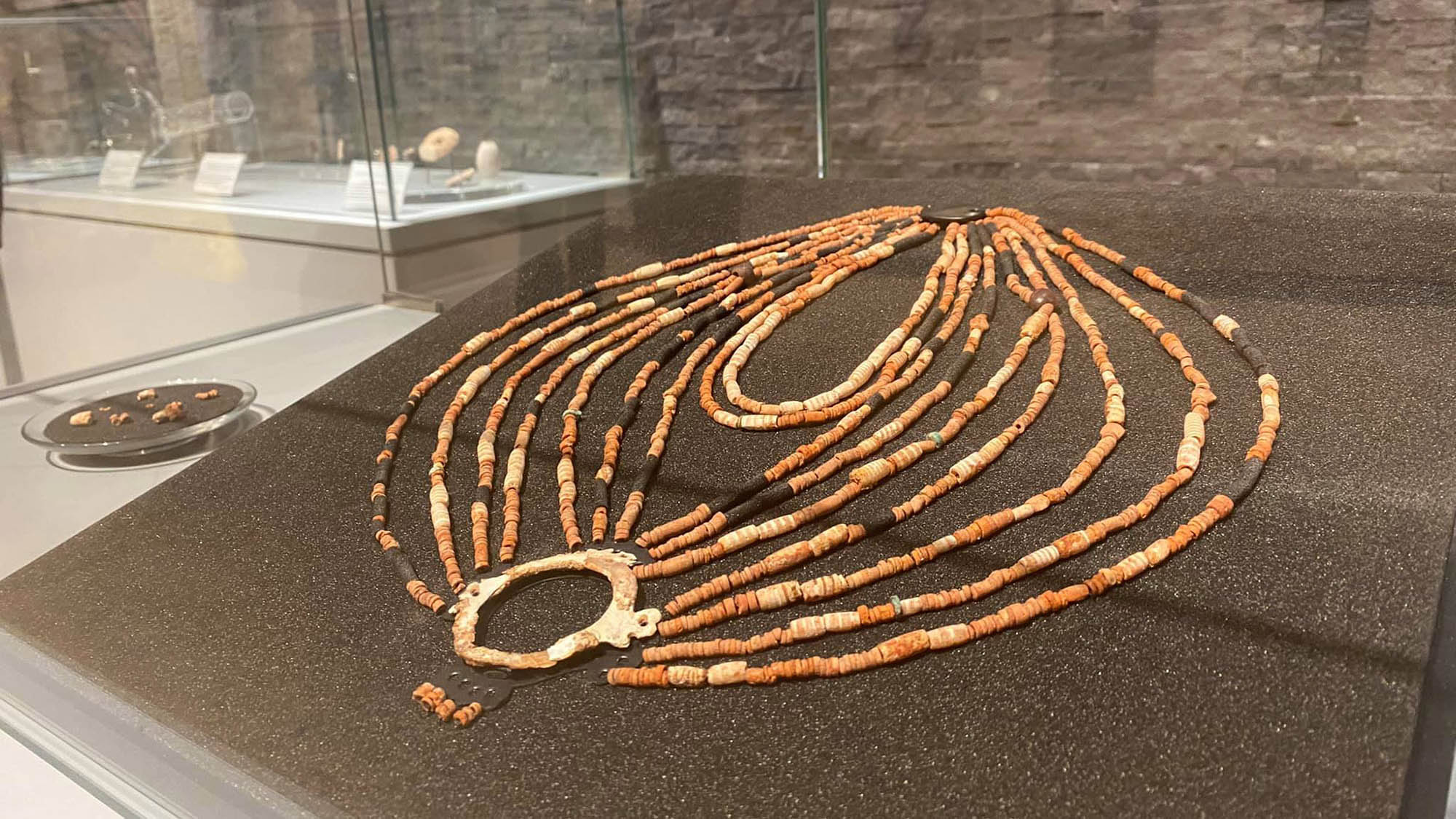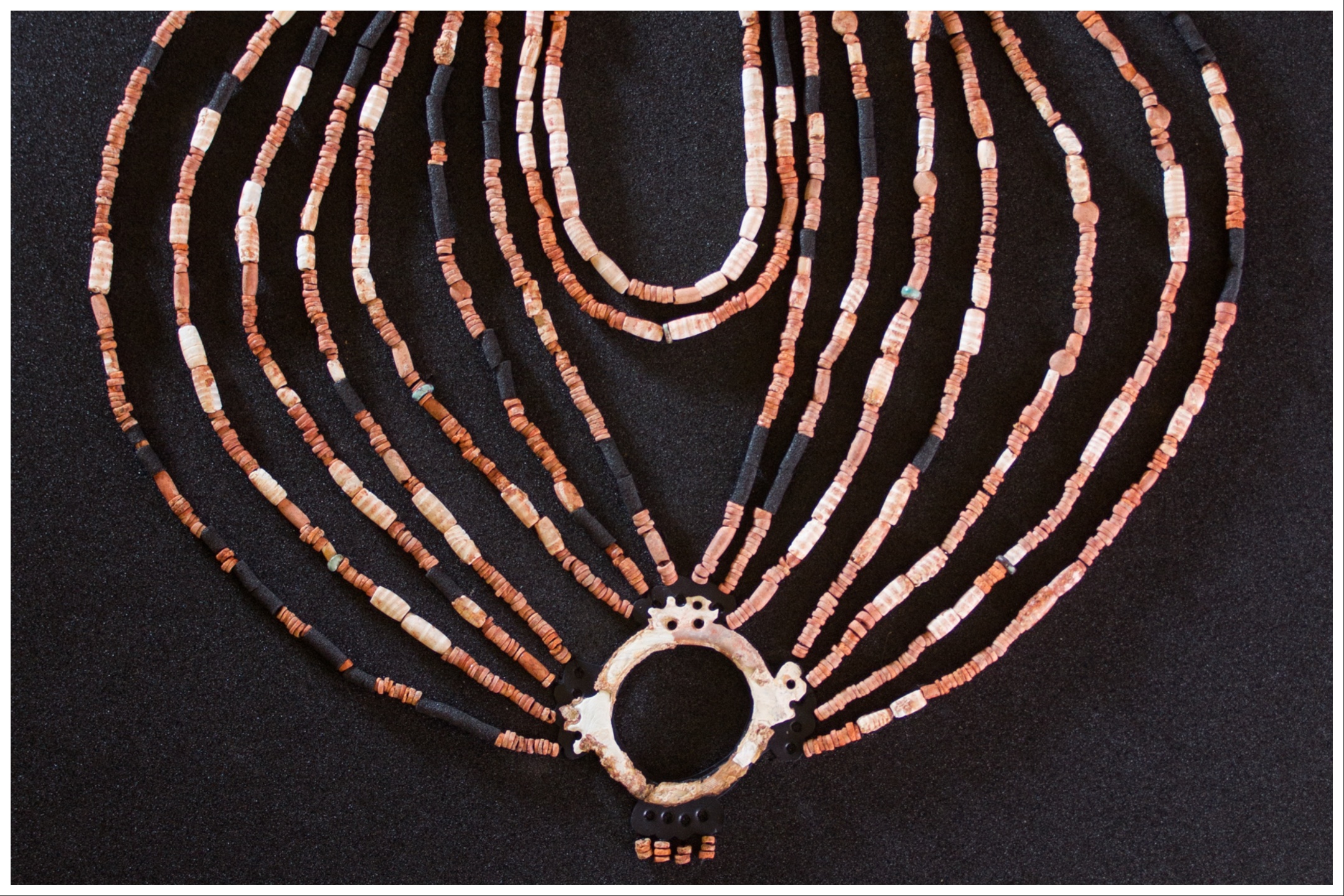Archaeologists have made an extraordinary discovery in present-day Jordan: the remains of a child interred with thousands of beads, dating back approximately 9,000 years. This find provides a captivating insight into the burial customs and cultural significance of the Neolithic village of Ba`ja. The intricate necklace reconstructed from this ancient child’s grave highlights the society’s deep respect for their youth and their advanced craftsmanship.
The Discovery
An international team, spearheaded by archaeologist Hala Alarashi from Côte d’Azur University in France, identified the remains as likely belonging to an 8-year-old girl. Though the bones are significantly deteriorated, offering scant details about the child’s life, the myriad beads buried alongside her reveal substantial information.

The Beads
The grave contained more than 2,500 beads crafted from calcite, turquoise, and hematite, most of which were stained red and scattered across the child’s chest and neck. Amidst this array, researchers observed a clear pattern: for every ten disc-shaped beads, there were two nearby tube-shaped beads. This configuration suggests that the beads were originally strung together, possibly sewn into garments or worn on the body.
The Necklace Reconstruction
Behind the child’s neck, Alarashi and her team found a mother-of-pearl ring and a double-perforated pendant with several beads still attached. Utilizing these clues, scientists painstakingly reconstructed the multi-stranded pendant, unveiling an ornate accessory that once adorned the child.
**The Ancient Village of Baja** Baja, inhabited between 7400 and 6600 BCE, is a small yet archaeologically significant village. Its remote location, accessible only through winding gorges and steep rock formations, conceals a wealth of historical artifacts. Despite its seclusion, not all residents were interred here; the few graves uncovered—primarily beneath houses—contained infants and children accompanied by numerous grave goods. In 2018, archaeologists discovered the 8-year-old girl’s grave beneath a room in this ancient settlement.
Cultural Significance

The researchers determined that the beads were part of an ornament that disintegrated over time as the body decomposed. This necklace is unique compared to others found in the Levant, a historical region extending from the Eastern Mediterranean to West Asia. The harmonious color palette and precise symmetry of the beads suggest great wealth and prosperity. The centerpiece is the mother-of-pearl ring, intricately engraved with delicate patterns reminiscent of lace or filigree, reflecting the community’s artistic sensibility.
A Testament to Neolithic Craftsmanship
The sheer volume of beads, their intricate arrangement, and their aesthetic appeal evoke later ornaments discovered in Mesopotamia and Egypt. However, this ancient Levantine necklace stands apart. Thanks to the archaeologists’ thorough analysis, they have reimagined one of the oldest and most impressive Neolithic ornaments, likely crafted for a highly esteemed child within the community.
Conclusion
The reconstructed necklace, now displayed at the New Museum of Petra in Jordan, is a significant testament to the era’s cultural practices. It was not designed for trade but was integral to the child’s burial, showcasing the community’s veneration for their young and their refined craftsmanship. This remarkable find provides invaluable insights into the Neolithic period and the people of Ba`ja, emphasizing their intricate social structures and cultural values.

